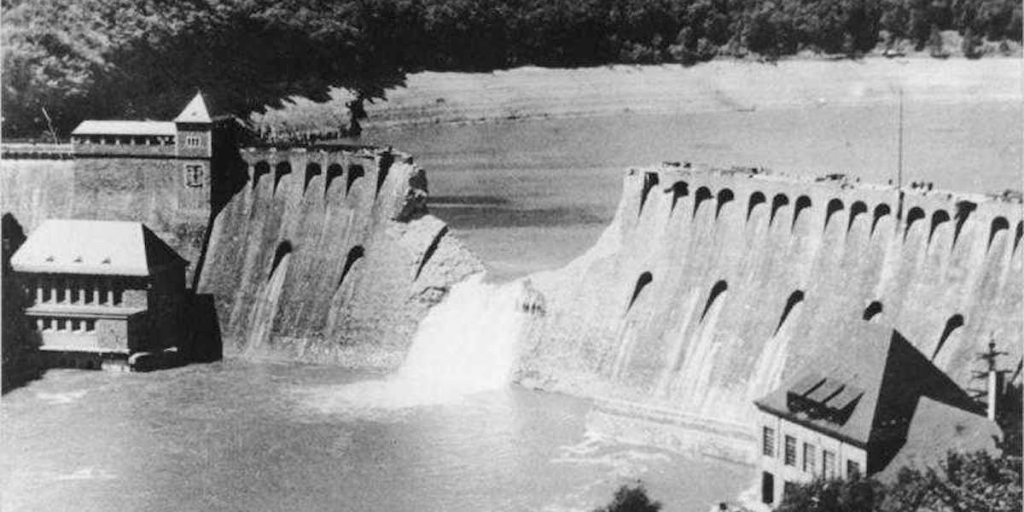- By 1943, the Allies had begun a strategic bombing campaign against Germany's war industry.
- Bombing industrial centers was costly and often inaccurate, and the Allies sought better targets.
- To attack Germany's energy sources, the British brought in the now-legendary Dambusters.
At 9:28 p.m. on May 16, 1943, a squadron of 19 Avro Lancaster heavy bombers from the British Royal Air Force took off from their base in England and headed toward Germany.
By 1943, British bombing raids on Germany were common, but these bombers were on a secret mission, one so unique and demanding that a new squadron was created for it.
No. 617 Squadron was made up of some of the most experienced bomber pilots in the world. Their planes carried a specially designed munition made to destroy a specific target: dams.
The mission would make legends of the pilots and their squadron, which remains one of the RAF's most celebrated units.
Strategic bombing
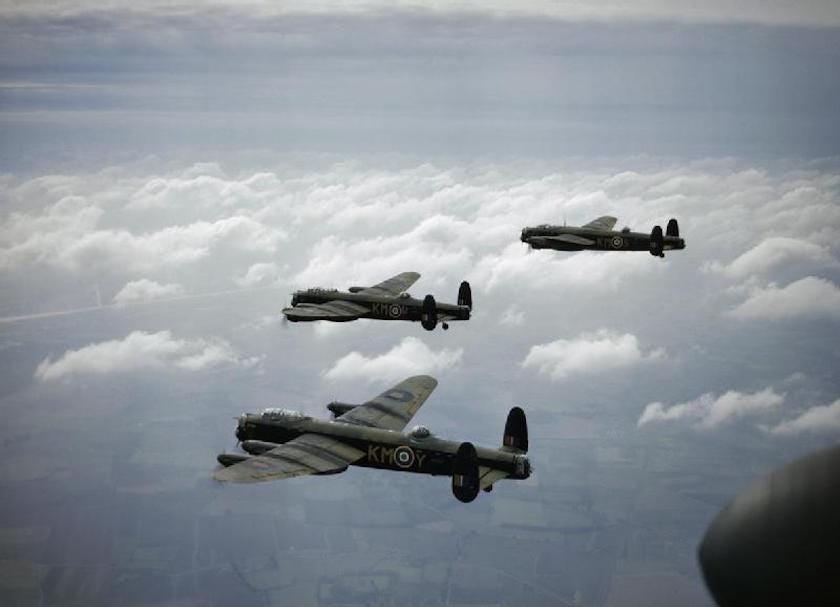
By 1943, Allied strategic bombing was seen as vital to defeating Nazi Germany. The most important targets were industrial — the factories, refineries, and oil storage facilities that armed and fueled the German war machine.
The precision of aerial bombardments was limited by the technology of the time, however, and the best way to ensure those targets were hit was with carpet bombing.
Hundreds of bombers flew over cities and industrial centers to drop thousands of tons of bombs. Entire city blocks were destroyed and thousands of civilians were killed. Allied bomber crews were also killed or captured in great numbers.
The British sought to make the bombing more accurate. One solution, proposed by Vickers aeronautical engineer Barnes Wallis, was to go after the factories' energy sources, namely dams.
Dams provided hydroelectricity and water for factories and houses and supported agricultural development. The destruction of one dam, causing power outages and flooding, could ripple through German supply chains.
Targeting dams wasn't a new idea, but it was particularly hard because of their physical layout and composition. The Germans also set up robust defenses around important dams and adapted to Allied efforts to destroy them.
Bouncing bombs
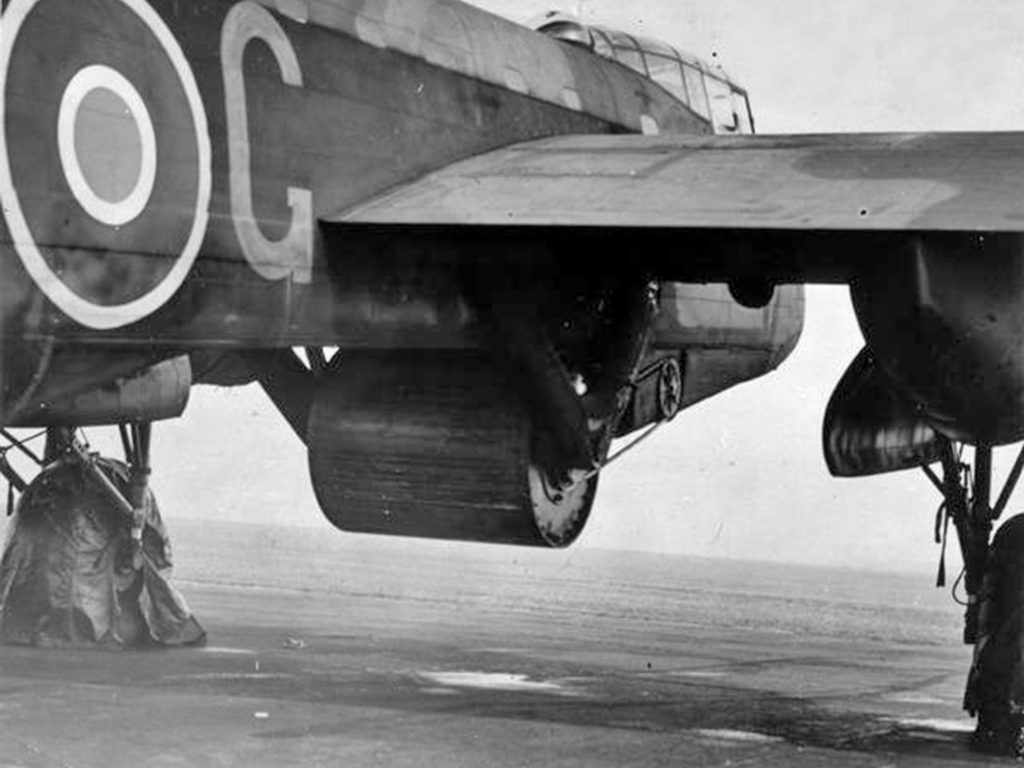
Wallis focused on developing a weapon that could reliably breach a dam without requiring hundreds of bombers. His solution was a bomb that, when dropped from 60 feet at about 230 mph, would skip across the water, hit the dam, sink, and then detonate.
Wallis found that a bomb's explosive pressure would be magnified by water, which is denser than air. Wallis' bomb was designed to capitalize on that effect, with a cylindrical shape to keep it intact after hitting the water and ensure it had the backspin needed to maintain stability and reduce its angle of impact.
No. 617 Squadron, led by Wing Commander Guy Gibson, was to conduct the raid during nighttime but practiced at all hours, putting blue plastic screens over their windows during daytime to simulate darkness.
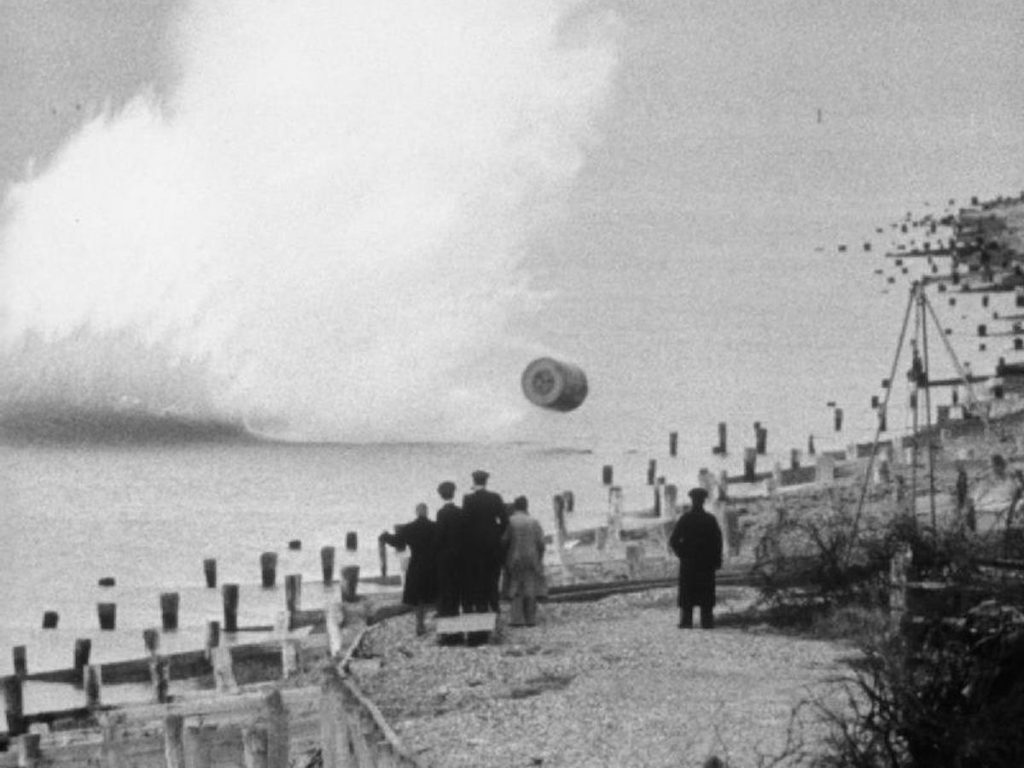
The bombers themselves also needed to be modified. The special mounting and release system for the 9,000-pound bouncing bomb, which also had a motor to generate backspin, was too big for the bomb bay, and its fuselage doors were removed. The bomber's lower guns were also removed to reduce drag.
Technicians also developed a system with two lights mounted underneath the bomber to shine on the surface of the water. The lights would overlap when the aircraft reached the 60-foot altitude at which the bomb could be safely dropped.
Their targets were the Möhne, Sorpe, and Eder dams in the Ruhr valley, Germany's industrial heartland. Only Gibson knew the targets during training. The rest of the squadron was told the day of the strike.
'Dambusters'
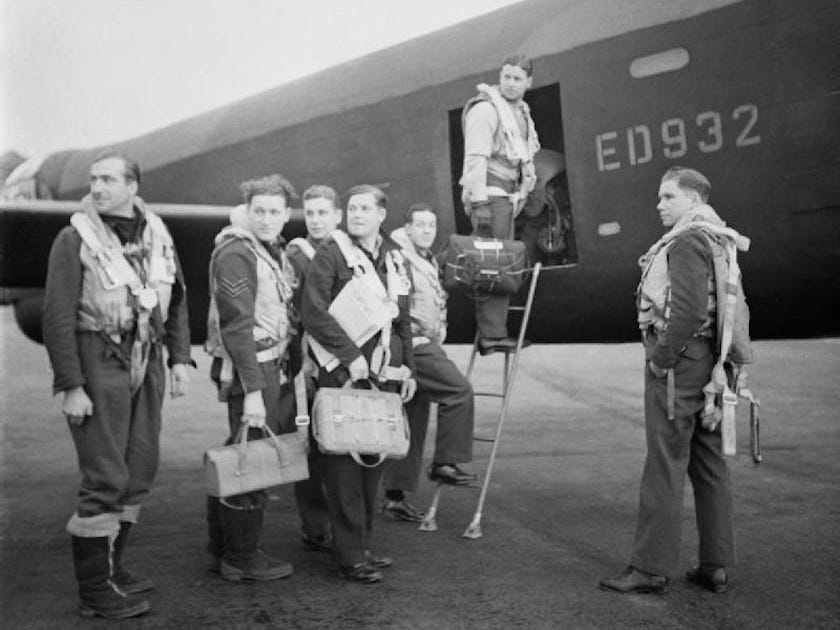
Operation Chastise, as the mission was known, began on the night of May 16. The Lancasters took two routes across the Netherlands and into Germany, flying as low as possible to avoid detection.
The journey proved hazardous. One Lancaster flew so low over the North Sea that a wave ripped its bomb clean off, forcing it to turn back. One was shot down over the Netherlands, and two more accidentally crashed into power lines.
The first target was Möhne dam. After several runs in which bombs fell short or bounced over the dam, at least two bombs managed to detonate successfully, breaking a large hole in the dam. The Eder dam was breached after three bomb drops, but the Sorpe dam held firm.
In all, eight Lancasters were lost. Of the 133 airmen involved, 53 were killed and three were captured — a fatality rate of 40%.
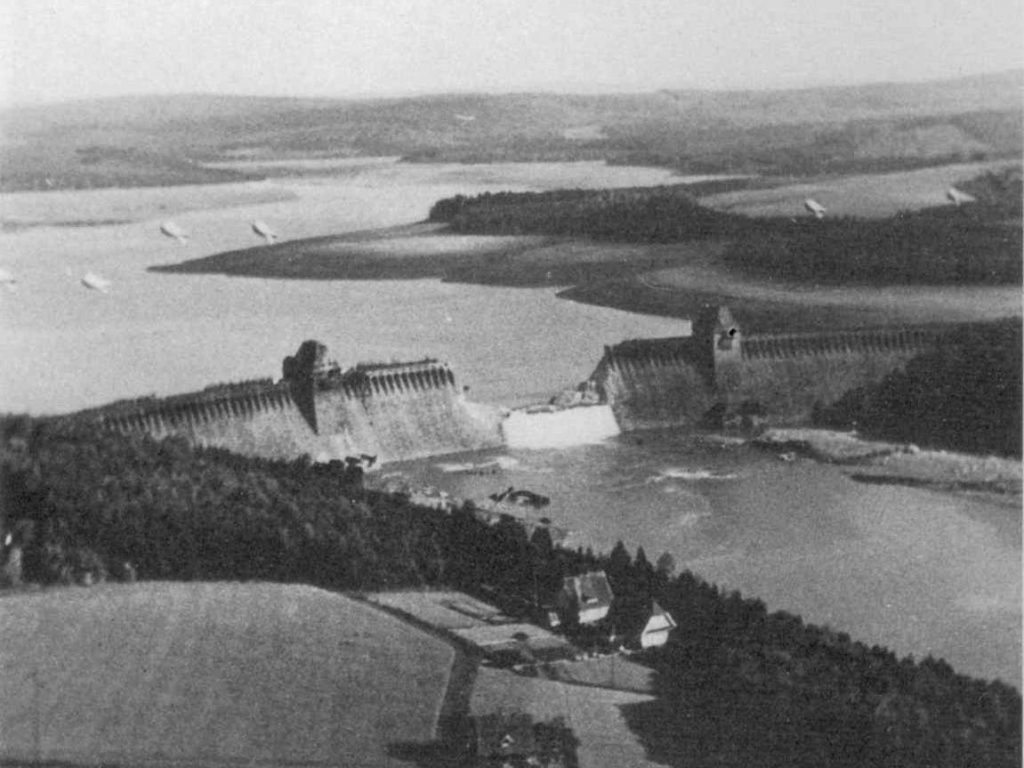
But they had wrought havoc on the Germans, flooding the Ruhr Valley with over 300 million tons of water.
All bridges within 30 miles of the Möhne dam were destroyed, as were 12 factories supporting the war effort. Another 100 factories were damaged. Mines and crops were flooded, and 400,000 tons of coal production was lost. Some industrial activity was halted for weeks.
The flooding also killed more than 1,500 people, most of them prisoners of war, laborers, and civilians.
The Germans were able to repair the dams within five months, but the labor and resources put into their reconstruction took away from other important projects, notably Hitler's Atlantic Wall, meant to defend against an Allied invasion.
Lasting legacy
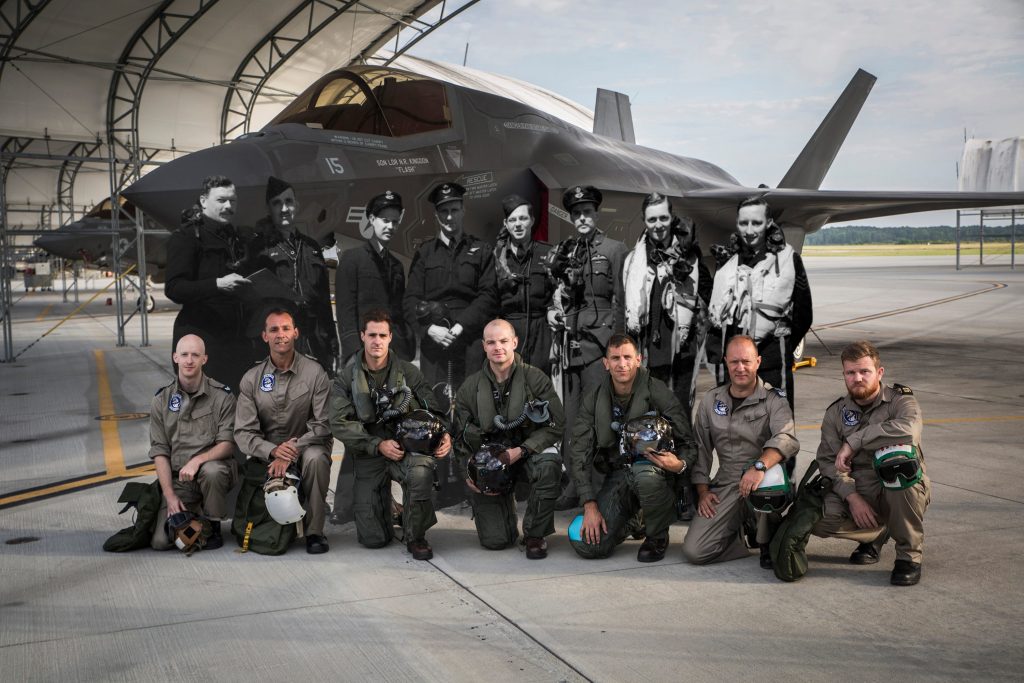
No. 617 Squadron became known as the "Dambusters" and earned an elite reputation.
Later in the war the squadron supported the invasion of France and helped sink the German battleship Tirpitz with Tallboy bombs, another one of Wallis' specially designed weapons.
In 2018, the Dambusters became the first RAF squadron equipped with F-35B stealth jets. In 2021, eight of them deployed aboard HMS Queen Elizabeth as part of the Royal Navy's Carrier Strike Group 21.
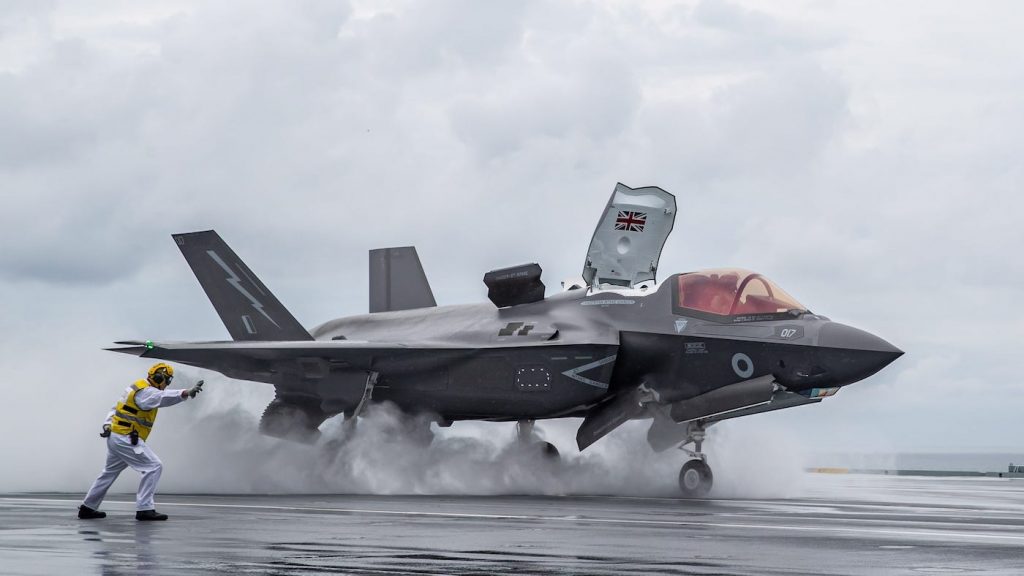
During the deployment, the strike group sailed 49,000 miles to the Pacific and back, visiting or exercising with 44 countries.
The Dambusters' F-35Bs made over 3,000 deck landings and conducted the RAF's first F-35B combat operations when they struck ISIS targets in Syria. One F-35B crashed while landing on the carrier in the Mediterranean, but the pilot survived and the aircraft was eventually recovered.
The Dambusters also participated in Exercise Cold Response in March, flying north to take part in simulated air battles with the Royal Navy's other new carrier, HMS Prince of Wales.
